
|
Keywords: Venus, annular solar eclipse, transit
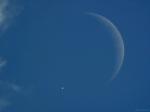 A Daylight Eclipse of Venus
A Daylight Eclipse of Venus
20.06.2007
Something was about to happen. Just two days ago, two of the three celestial objects easily visible during the day appeared to collide. But actually, Earth's Moon passed well in front of the distant planet Venus. The occultation was caught from Switzerland in the hours before sunset.
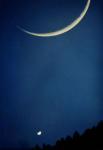 Moon And Venus Share The Sky
Moon And Venus Share The Sky
28.07.2000
July is drawing to a close and in the past few days, some early morning risers could have looked east and seen a crescent Moon sharing the pre-dawn skies with planets Jupiter and Saturn.
 Hyakutake, Venus, Orion, and Pond
Hyakutake, Venus, Orion, and Pond
18.04.1996
Can you find Comet Hyakutake in the above picture? In this gorgeous photo, the starry night sky of April 9th is pictured with its new comet visitor. In the foreground is a pond with the lights of Kansas City, Missouri on the western horizon. On the upper left, the constellation of Orion is visible.
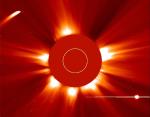 Sunbather
Sunbather
11.01.2002
Intense and overwhelming, the direct glare of the Sun is blocked by the smooth disk centered in this image from the sun-staring SOHO spacecraft. Taken on January 8, the picture shows streamers of solar wind billowing radially outward for millions of kilometers above the Sun's surface indicated by the white circle.
 Venus and Jupiter on the Horizon
Venus and Jupiter on the Horizon
26.11.2019
What are those two bright objects on the horizon? Venus and Jupiter. The two brightest planets in the night sky passed very close together -- angularly -- just two days ago. In real space, they were...
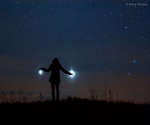 APOD: 2023 March 6 Б Jupiter and Venus from Earth
APOD: 2023 March 6 Б Jupiter and Venus from Earth
6.03.2023
It was visible around the world. The sunset conjunction of Jupiter and Venus in 2012 was visible almost no matter where you lived on Earth. Anyone on the planet with a clear western horizon at sunset could see them.
 The Last Days of Venus as the Evening Star
The Last Days of Venus as the Evening Star
5.10.2018
That's not a young crescent Moon poised above the hills along the western horizon at sunset. It's Venus in a crescent phase. About 54 million kilometers away and less than 20 percent illuminated, it was captured by telescope and camera on September 30 near Bacau, Romania.
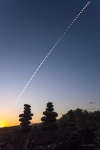 Eclipse to Sunset
Eclipse to Sunset
7.09.2016
September's eclipse of the Sun is documented in the 68 frames of this timelapse composite. Starting at 1pm local time a frame every 4 minutes follow's the progress of the New Moon across the solar disk.
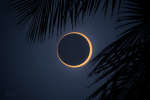 Ring of Fire over Easter Island
Ring of Fire over Easter Island
11.10.2024
The second solar eclipse of 2024 began in the Pacific. On October 2nd the Moon's shadow swept from west to east, with an annular eclipse visible along a narrow antumbral shadow path tracking...
 APOD: 2024 October 8 Б Annular Eclipse over Patagonia
APOD: 2024 October 8 Б Annular Eclipse over Patagonia
8.10.2024
Can you find the Sun? OK, but can you explain why thereБs a big dark spot in the center? The spot is the Moon, and the impressive alignment shown, where the Moon lines up inside the Sun, is called an annular solar eclipse.
|
January February March April May June July |
|||||||||||||||||||||||||||||||||||||||||||||||||